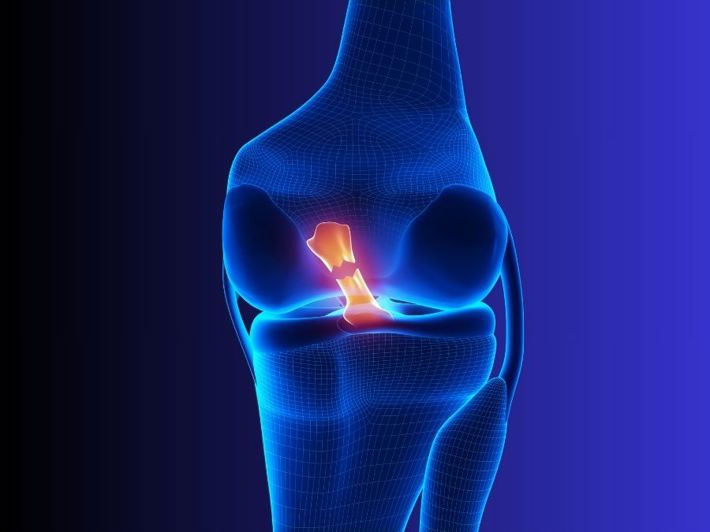The knee joint contains four major ligaments, most notably the anterior cruciate ligament (ACL) and the posterior cruciate ligament (PCL), which intersect in an X-shape inside the knee. These ligaments are responsible for stabilizing the knee and allowing it to bend and straighten smoothly. (1)
ACL tears are among the most common knee injuries. Typically, the tear is complete or near-complete, and often requires surgery to reconstruct the ligament. (1)
What Is ACL Surgery?
ACL surgery involves removing the damaged ACL and replacing it with a graft taken from another tendon in the leg—usually the hamstring or patellar tendon. The surgery is usually performed arthroscopically through small incisions around the knee, avoiding the need for large surgical openings and supporting faster recovery. (2)
When Do I Need ACL Surgery?
The need for ACL surgery depends on the severity of the tear, your activity level, and your overall lifestyle. Doctors usually recommend surgery in the following cases: (2)
- If you're an athlete or play sports that involve pivoting or twisting (like football or basketball) and want to return to playing regularly.
- If your job requires heavy physical work (e.g., construction workers, firefighters).
- If your knee is unstable due to the tear and frequently gives out.
- If other parts of your knee are also injured, such as the meniscus or hamstring tendons.
What Happens If I Delay or Skip Surgery?
Delaying surgery when there's significant knee instability may increase the risk of meniscus tears and other future knee issues like osteoarthritis. However, not everyone with an ACL tear needs surgery. For example, if you don’t have major instability and aren’t physically active, you may recover without surgery over several months to two years—with commitment to physical therapy and rehab. But for professional athletes, surgery is often essential to restore full knee function, and skipping it may yield poor outcomes. (3)
How to Prepare for Surgery
- Quit smoking to support healing.
- Maintain a healthy weight.
- Engage in light, guided exercise to strengthen the muscles around the knee.
- Attend physical therapy sessions as advised.
- Fast the night before surgery, as recommended by your doctor.
How Is ACL Surgery Performed?
ACL surgery usually takes around 1 to 1.5 hours and involves:
- Regional or general anesthesia, depending on your case.
- Making small 1 cm incisions around the knee joint.
- Inserting an arthroscope and surgical instruments through the incisions.
- Evaluating and repairing any other knee injuries.
- Making a larger 3–5 cm incision to harvest a graft tendon.
- Fixing the graft into place where the torn ACL was located.
- Over time, the graft integrates with the surrounding bone. (3)
Recovery After Surgery
Pain Management
You will be prescribed pain relievers during the recovery period. Your doctor may also recommend cold packs to reduce pain and swelling. (2)
Recovery Timeline (Walking and Activity)
- Day 1: Walking with crutches is possible the same day as surgery, with limited weight-bearing depending on your surgeon’s advice.
- First 2 Weeks: Gradual improvement in walking ability.
- 2–6 Weeks: Return to walking without crutches or painkillers.
- 6–14 Weeks: Regain full normal movement like climbing stairs.
- 3–5 Months: Begin light sports like jogging or cycling, without intense strain.
- 6–12 Months: Full recovery and return to high-impact sports, depending on your progress in rehab. (2)
Physical Therapy
Physical therapy is a core part of ACL surgery recovery. It typically begins 2–3 days post-op and continues until knee stability and function are fully restored. (3)
Is ACL Surgery Risky?
ACL surgery is generally safe and effective. However, like any surgery, there are possible complications:
General Surgery Risks
Rare complications include bleeding, infection, blood clots, or allergic reactions to anesthesia. (2)
ACL-Specific Complications: (2)
- Persistent instability: In some cases, full knee stability isn't restored, requiring additional surgery.
- Knee stiffness: Scar tissue may cause limited movement, but regular physical therapy helps prevent this.
- Graft site problems: The donor tendon site (e.g., hamstring or patellar tendon) may experience weakness or pain.
- Knee pain: Ongoing knee pain post-surgery can occur but typically improves with rehab.
- Graft re-tear: Risk increases if you return to intense activity before complete healing.
References:
- American Academy of Orthopaedic Surgeons - Anterior Cruciate Ligament (ACL) Injuries
- Bupa - Anterior cruciate ligament (ACL) reconstruction
- HSS - ACL Surgery
- HealthLink BC - Anterior Cruciate Ligament (ACL) Surgery
- Healthdirect australia - ACL reconstruction
- The University of Melbourne - Ruptured ACLs can heal without surgery, study finds






